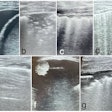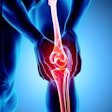
Combining historical clinical data with quantitative ultrasound data could better identify pregnant women at risk for spontaneous preterm birth, suggest findings published February 3 in Ultrasound in Medicine & Biology.
A team led by Barbara McFarlin, PhD, from the University of Illinois in Chicago reported that the combined method identified at-risk women at a higher area under the curve (AUC) than with just historical clinical data and clinical data plus cervical length at 18 to 20 weeks of gestation.
"Our work shows promise of quantitative ultrasound being an added ultrasound feature available to clinicians to assess spontaneous preterm birth risk based on tissue microstructure and without adding scanning time for data acquisition," McFarlin and colleagues wrote.
A recent study conducted by the National Center for Health Statistics stated that the incidence of preterm births increased from 4% in 2020 to over 10% in 2021. Predicting which women are at risk for spontaneous preterm birth (that is, birth before 37 weeks of gestation) is crucial, since there are often no signs or symptoms before intervention is needed.
The McFarlin team hypothesized that ultrasound could help by detecting cervical tissue microstructure changes. It wanted to assess ultrasound's efficacy when combined with historical clinical data.
The researchers evaluated data from a total of 274 births between 2018 and 2020. Out of these, 248 were full-term births and 26 were spontaneous preterm births. Sonographers performed two cervical quantitative ultrasound scans at 20 weeks and 24 weeks gestation. From there, researchers evaluated multiple ultrasonic features from calibrated raw radiofrequency backscattered ultrasonic signals.
They found that combining this data with historical clinical data was superior to other methods when it came to predicting which women were at risk for spontaneous preterm birth, despite the low number of such women in the study sample.
Combining ultrasound with clinical data had an AUC of 0.68. The method using just clinical data had an AUC of 0.53 while the method using clinical data plus cervical length had an average AUC of 0.51. Additionally, the team reported that a likelihood ratio test for significance of quantitative ultrasound features in the classification model was statistically significant (p < 0.01).
The authors added that traditional risk factors for spontaneous preterm birth such as age, history of preterm birth, and a cervical length of less than 25 mm, were not predictive of spontaneous preterm birth in their sample. They also highlighted that quantitative ultrasound data can be taken at the same time as conventional ultrasound scans, which means more scanning time is not needed for examination workflows.
"Importantly, quantitative ultrasound provides early information on the microstructure of the cervix rather than waiting for cervical shortening or symptoms of preterm labor," they wrote.




















